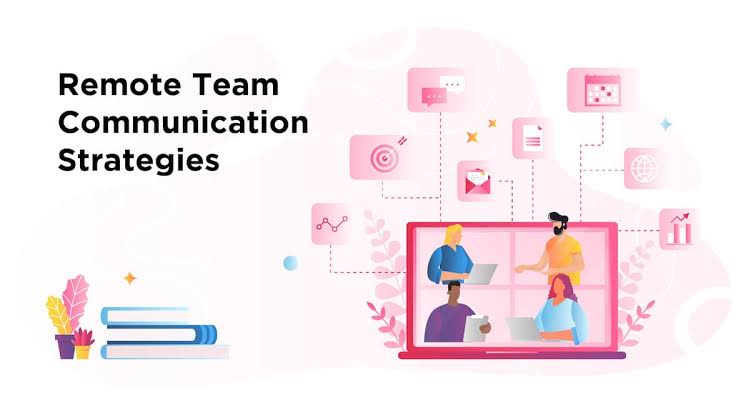Today, remote work is no longer just a temporary fix but a lasting way many companies operate. Thanks to technology, global changes, and the need for better work-life balance, remote teams are now common in many fields. But working this way also creates new communication problems. Misunderstandings, delays, and poor teamwork can reduce productivity if not handled well.
As of July 2025, effective communication strategies have become more crucial than ever in ensuring that remote teams stay engaged, aligned, and productive. With the rise of AI-powered tools, advanced collaboration platforms, and evolving work cultures, leaders and team members alike must adopt communication techniques that bridge the physical gap and foster strong virtual connections. This article explores the most effective communication strategies that remote teams can implement to thrive in the digital workspace.
Establish Clear Communication Guidelines
One of the foundational steps to effective communication in remote teams is setting clear guidelines. Without in-person interactions, ambiguity can easily arise about when and how to communicate. Defining rules around response times, preferred channels, meeting schedules, and reporting formats helps create consistency and reduces confusion.
For example, a team might agree to use email for formal updates, Slack for quick queries, and Zoom for weekly check-ins. These guidelines should be documented and accessible to all team members. As of mid-2025, many companies now create remote work handbooks or digital onboarding portals that include communication protocols. This ensures that new hires integrate smoothly and everyone operates with the same expectations.
Leverage the Right Communication Tools
The success of any remote team relies heavily on the tools it uses. Fortunately, by 2025, there are more options than ever to support seamless virtual collaboration. Platforms like Microsoft Teams, Slack, Zoom, Google Meet, and ClickUp have evolved with features tailored for remote workflows. These tools offer chat, video conferencing, file sharing, and project management in a unified environment.
AI-powered platforms have also emerged to improve efficiency. For example, Notion AI and Grammarly Business assist with writing clarity and tone, while apps like Otter.ai automatically transcribe meetings and provide searchable notes. The key is to choose a stack of tools that integrates well, is user-friendly, and aligns with the team’s communication needs. Overloading the team with too many platforms can lead to fragmentation and inefficiency, so simplicity should be prioritized.
Encourage Regular Check-ins and Updates
Remote teams must be intentional about staying connected. Unlike physical offices where informal interactions happen naturally, remote environments require structured touchpoints. Regular check-ins—whether daily stand-ups, weekly team meetings, or one-on-one sessions—are vital for maintaining accountability and emotional connection.
These meetings don’t have to be lengthy. A 15-minute daily huddle can help team members align on goals, voice concerns, and stay in sync. In 2025, many remote-first companies use asynchronous check-ins as well, where team members submit updates through a shared document or communication channel. This is particularly useful for teams spread across multiple time zones, allowing everyone to stay informed without the need for live meetings.
Foster a Culture of Transparency and Openness
Transparency builds trust, especially when team members aren’t working in the same physical space. Remote leaders must be open about decisions, expectations, and company goals. This means regularly sharing updates on team performance, company progress, and any changes that may affect the team.
Similarly, employees should feel comfortable voicing ideas, asking questions, and admitting challenges. Creating this open environment requires psychological safety—a condition where people feel safe to speak up without fear of negative consequences. As of July 2025, top-performing remote companies are investing in leadership training focused on empathy, emotional intelligence, and inclusive communication to cultivate trust and openness.
Prioritize Asynchronous Communication
Not all communication needs to happen in real-time. Asynchronous communication allows team members to respond to messages, updates, or tasks on their own schedule. This is especially helpful for distributed teams working across time zones. Tools like Loom, Trello, and Basecamp support asynchronous work by enabling teams to send video messages, assign tasks, and track progress without needing everyone online at the same time.
Encouraging asynchronous communication prevents burnout caused by excessive video calls and allows for deeper, more thoughtful responses. As of 2025, many organizations now balance their workflow with a hybrid model of synchronous and asynchronous communication to improve efficiency and work-life balance.
Use Video to Strengthen Human Connection
While messages and emails are effective, they lack the personal touch of face-to-face interaction. Video calls can fill that gap by providing non-verbal cues like facial expressions and body language, which are critical for building relationships. Teams that use video conferencing for important conversations tend to have stronger bonds and fewer misunderstandings.
Moreover, virtual face time helps combat isolation—a common challenge in remote work. Hosting occasional virtual coffee breaks, happy hours, or informal hangouts fosters a sense of camaraderie and belonging. By July 2025, many companies incorporate “video-on” days or use avatars and virtual meeting spaces to make interactions more engaging and human.
Encourage Feedback and Continuous Improvement
A healthy communication culture includes a regular feedback loop. Remote teams should establish channels where employees can provide input on workflows, communication practices, and team dynamics. Whether it’s through anonymous surveys, suggestion boxes, or open feedback sessions, continuous improvement must be encouraged.
Managers should also offer constructive feedback regularly, not just during annual reviews. As remote teams often operate independently, real-time feedback helps course-correct and motivates team members to keep improving. Tools like 15Five and Lattice are popular in 2025 for managing employee engagement and performance feedback in remote settings.
Support Different Communication Styles
People communicate differently. Some prefer visual cues, while others respond better to written instructions. In remote teams, it’s important to recognize and accommodate these differences. For instance, some team members might find it easier to absorb information through visual dashboards or infographics, while others might need detailed documentation or audio explanations.
By embracing various communication formats—text, audio, video, visuals—leaders can ensure everyone remains on the same page. Diversity in communication styles also promotes inclusivity and ensures that no one feels left out or misunderstood due to their preferences or limitations.
Document Everything
In remote work, documentation isn’t just helpful—it’s essential. Without hallway conversations or impromptu updates, information must be recorded and accessible for future reference. Teams should document meeting notes, decisions, workflows, and key project milestones in a centralized location.
Wikis, cloud drives, and knowledge bases (like Notion, Confluence, or Google Workspace) are widely used in 2025 for this purpose. Good documentation reduces redundancy, allows new team members to onboard faster, and ensures continuity even if someone leaves or changes roles.
Final Thoughts
Effective communication is the foundation of successful remote teams. As of July 2025, the workplace continues to evolve, but one thing remains constant: teams that communicate clearly, consistently, and empathetically perform better, stay connected, and build stronger relationships.
Whether your team is spread across cities or continents, the right strategies and tools can ensure seamless collaboration and shared purpose. By prioritizing transparency, regular check-ins, clear documentation, and the right balance between synchronous and asynchronous communication, remote teams can overcome physical distance and operate as a unified, high-performing unit.




Good